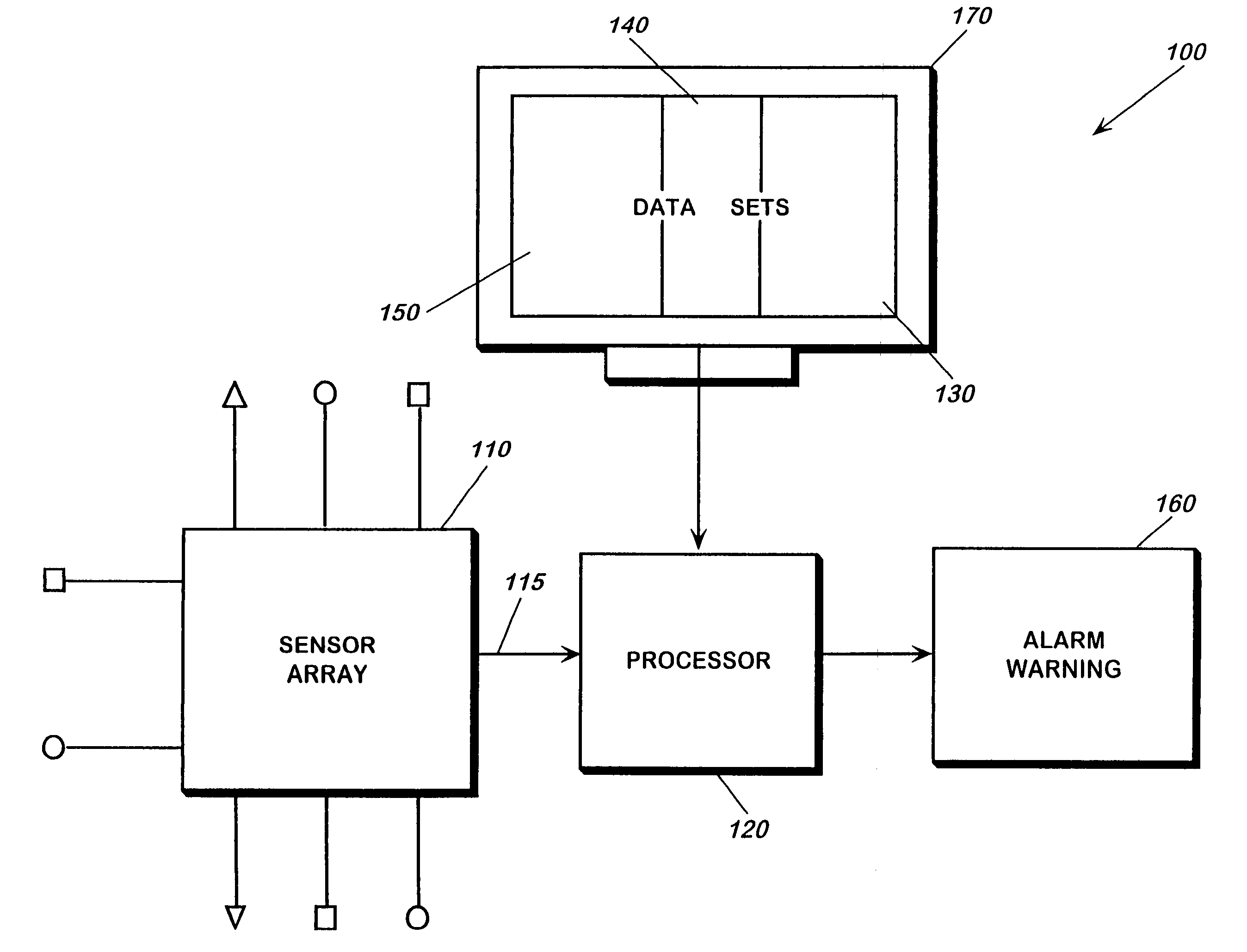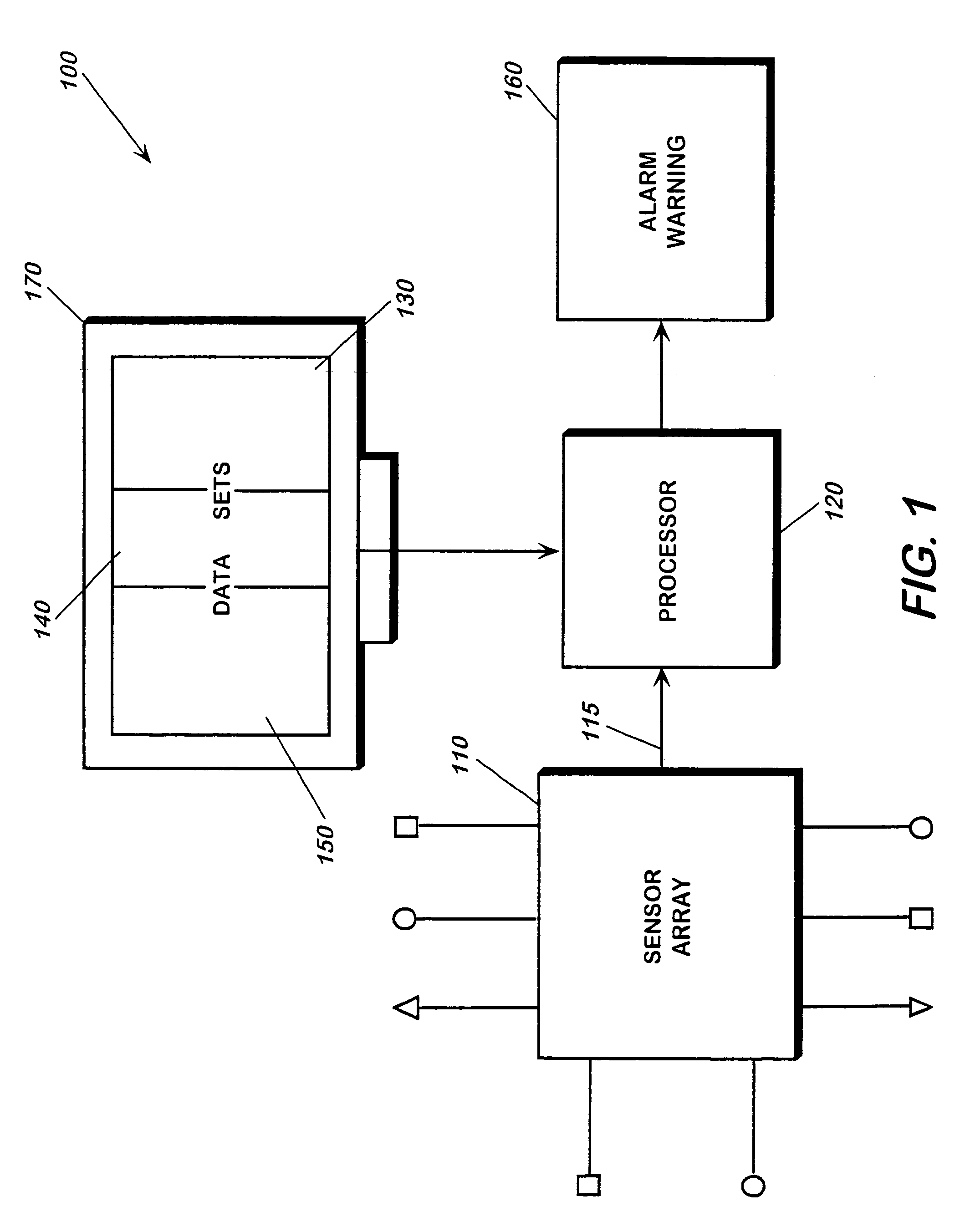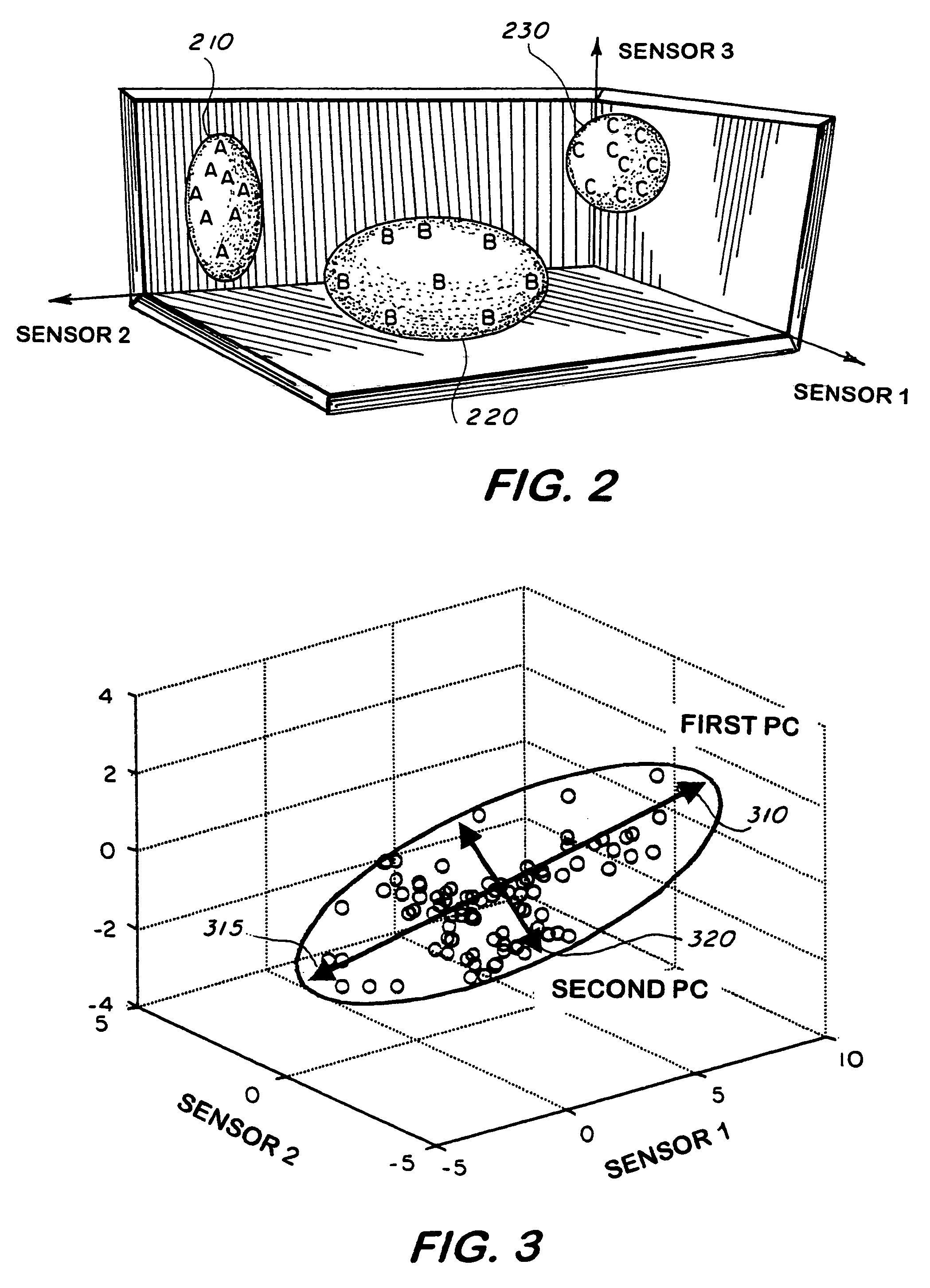Identification of fire signatures for shipboard multi-criteria fire detection systems
a multi-criteria, fire detection system technology, applied in the field of fire detection systems, can solve the problems of system to issue a fire condition/alarm, reducing the efficiency of response to actual fires,
- Summary
- Abstract
- Description
- Claims
- Application Information
AI Technical Summary
Benefits of technology
Problems solved by technology
Method used
Image
Examples
Embodiment Construction
[0012]Referring now to the figures wherein like reference numbers denote like elements, FIG. 1 is a block diagram of the fire detection system. As shown in FIG. 1, the multi-criteria fire detection system 100, comprises a plurality of sensors or sensor array 110. Each sensor within sensor array 110 is capable of detecting a signature characteristic of a presence of a fire and providing an output indicating the same. A processor 120 for receiving each output of the plurality of sensors is also employed and coupled to sensor array 110. The processor 120 includes a probabilistic neural network for processing the sensor outputs 115. The probabilistic neural network comprises a nonlinear, nor-parametric pattern recognition algorithm that operates by defining a probability density function for a plurality of data sets 170 that are each based on a training set data and an optimized kernel width parameter. The plurality of data sets 170 includes a baseline, non-fire, fist data set 140; a se...
PUM
 Login to View More
Login to View More Abstract
Description
Claims
Application Information
 Login to View More
Login to View More - R&D
- Intellectual Property
- Life Sciences
- Materials
- Tech Scout
- Unparalleled Data Quality
- Higher Quality Content
- 60% Fewer Hallucinations
Browse by: Latest US Patents, China's latest patents, Technical Efficacy Thesaurus, Application Domain, Technology Topic, Popular Technical Reports.
© 2025 PatSnap. All rights reserved.Legal|Privacy policy|Modern Slavery Act Transparency Statement|Sitemap|About US| Contact US: help@patsnap.com



